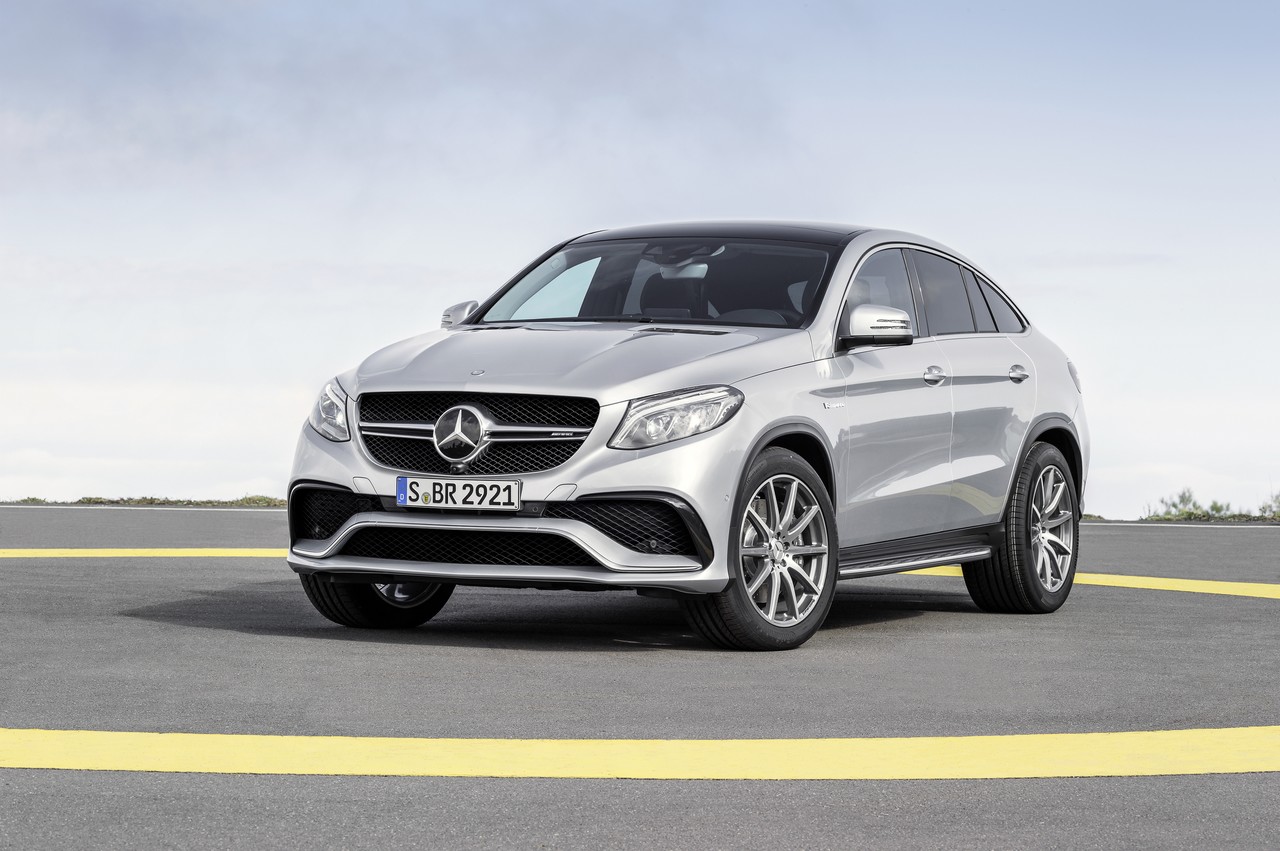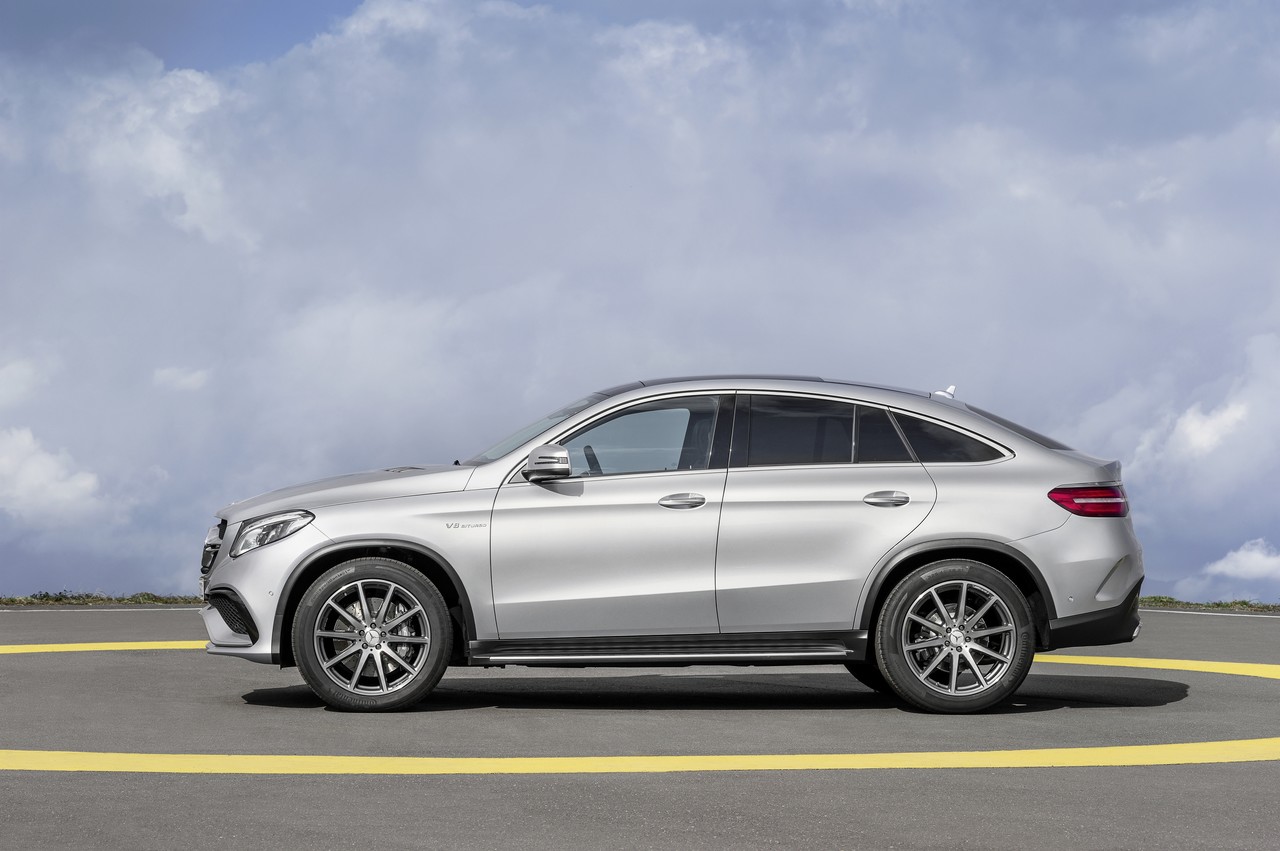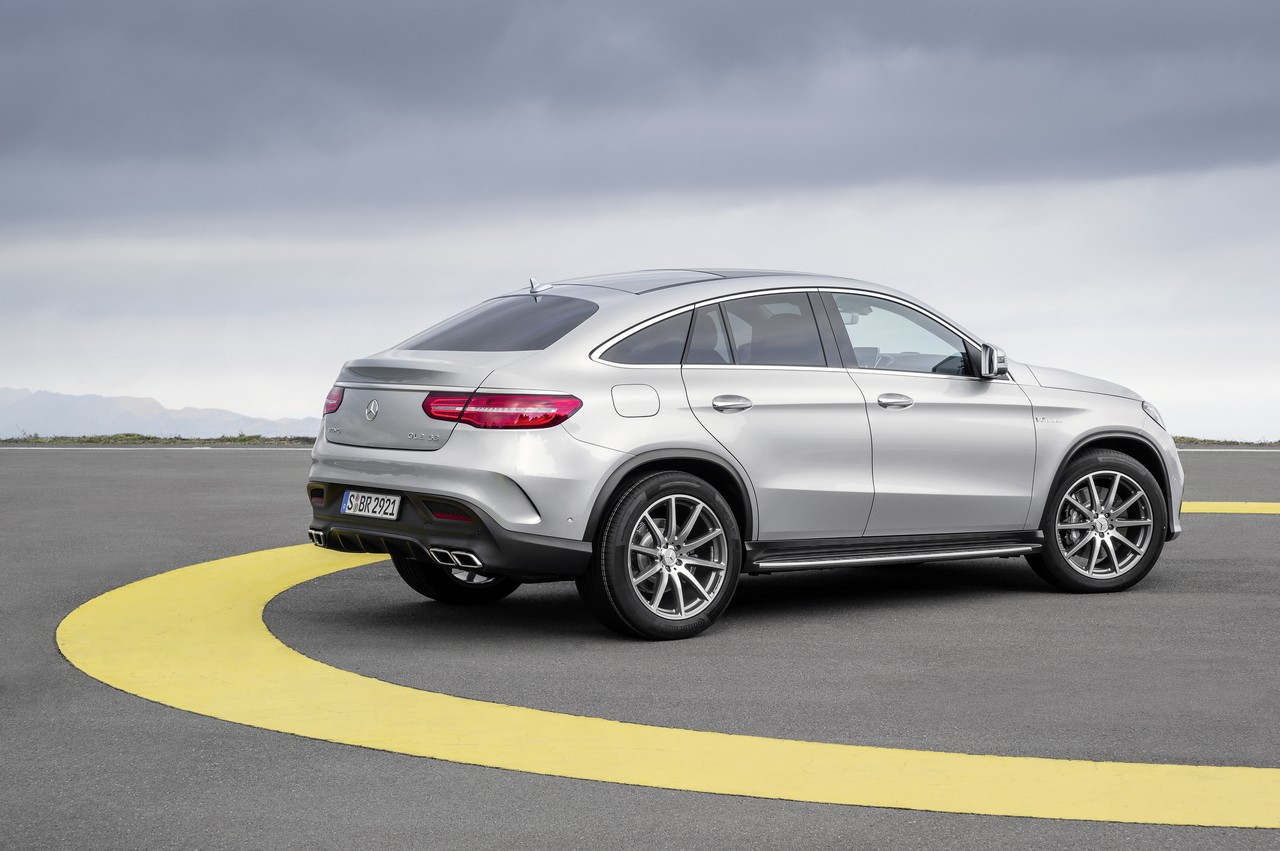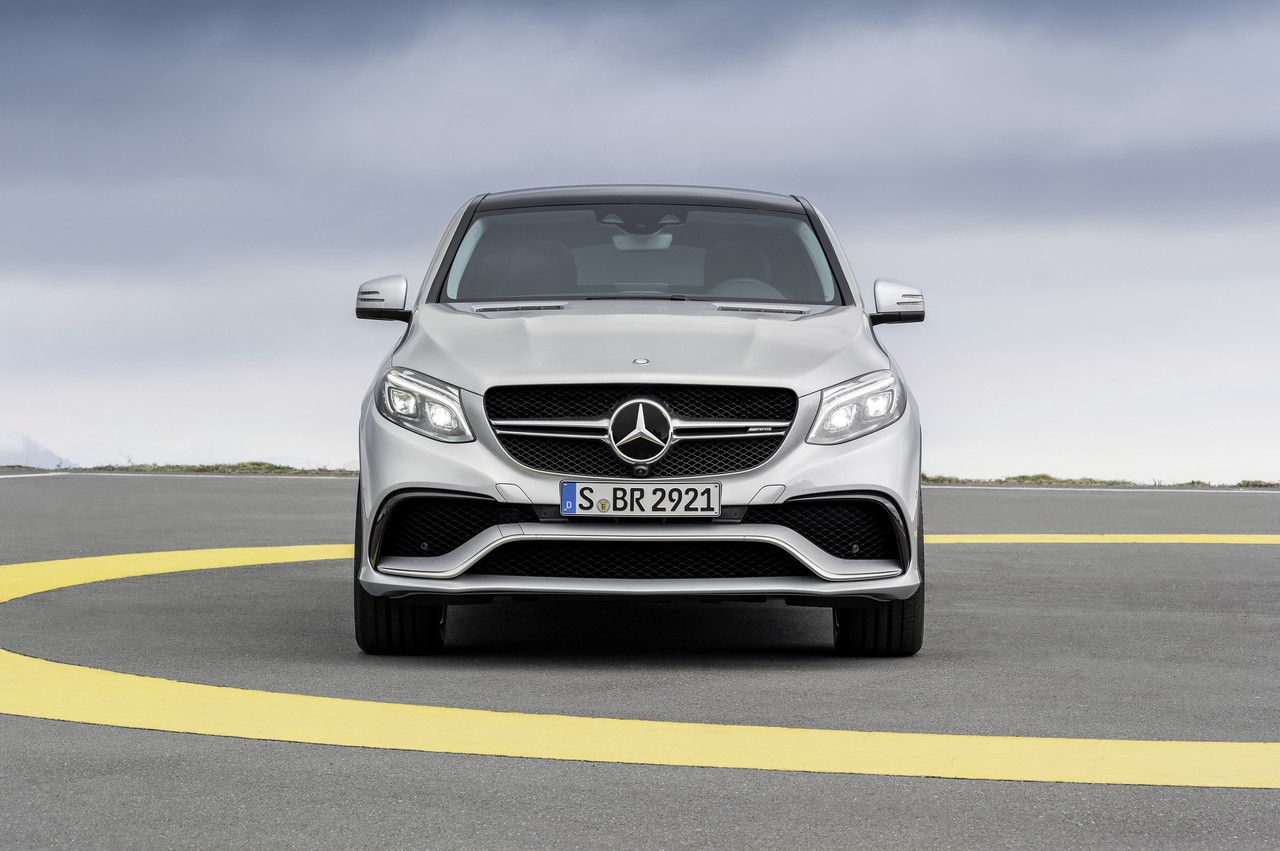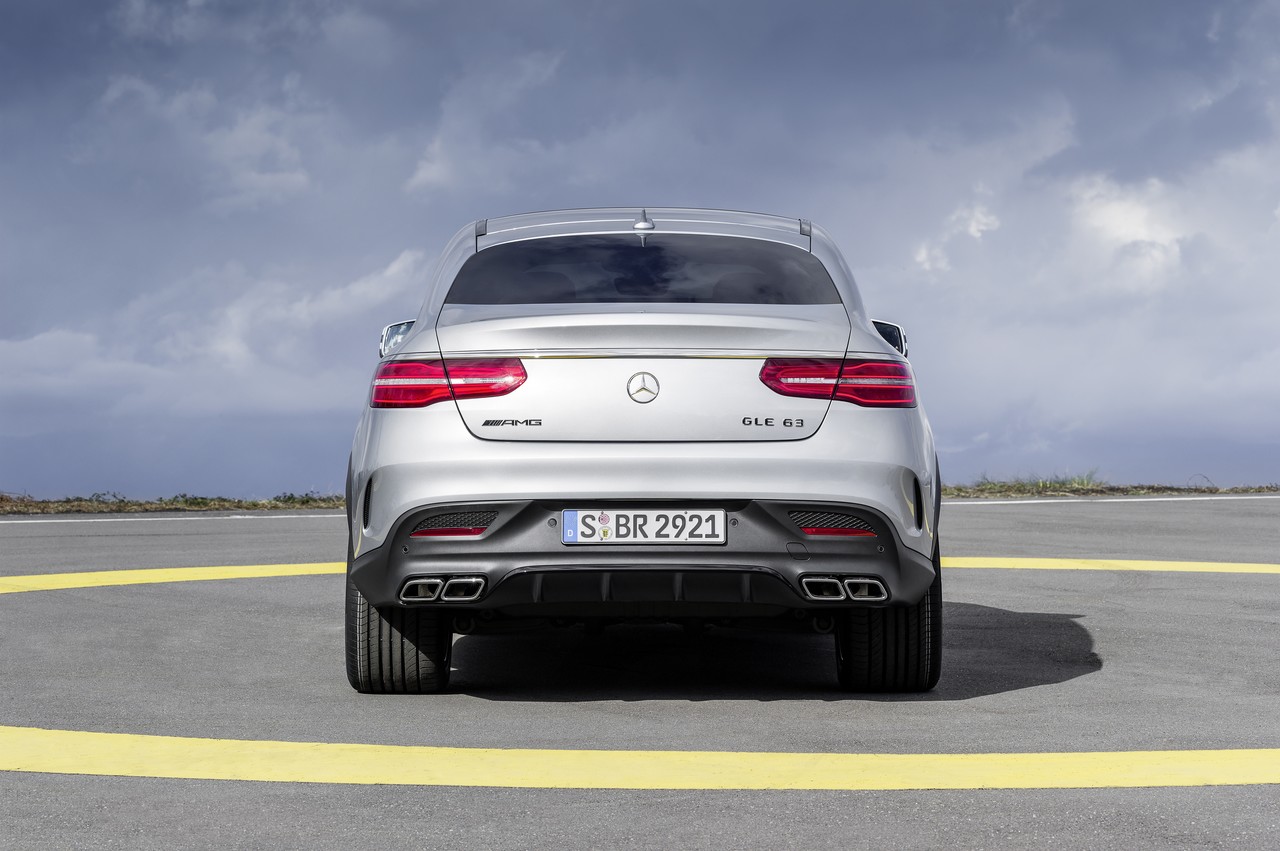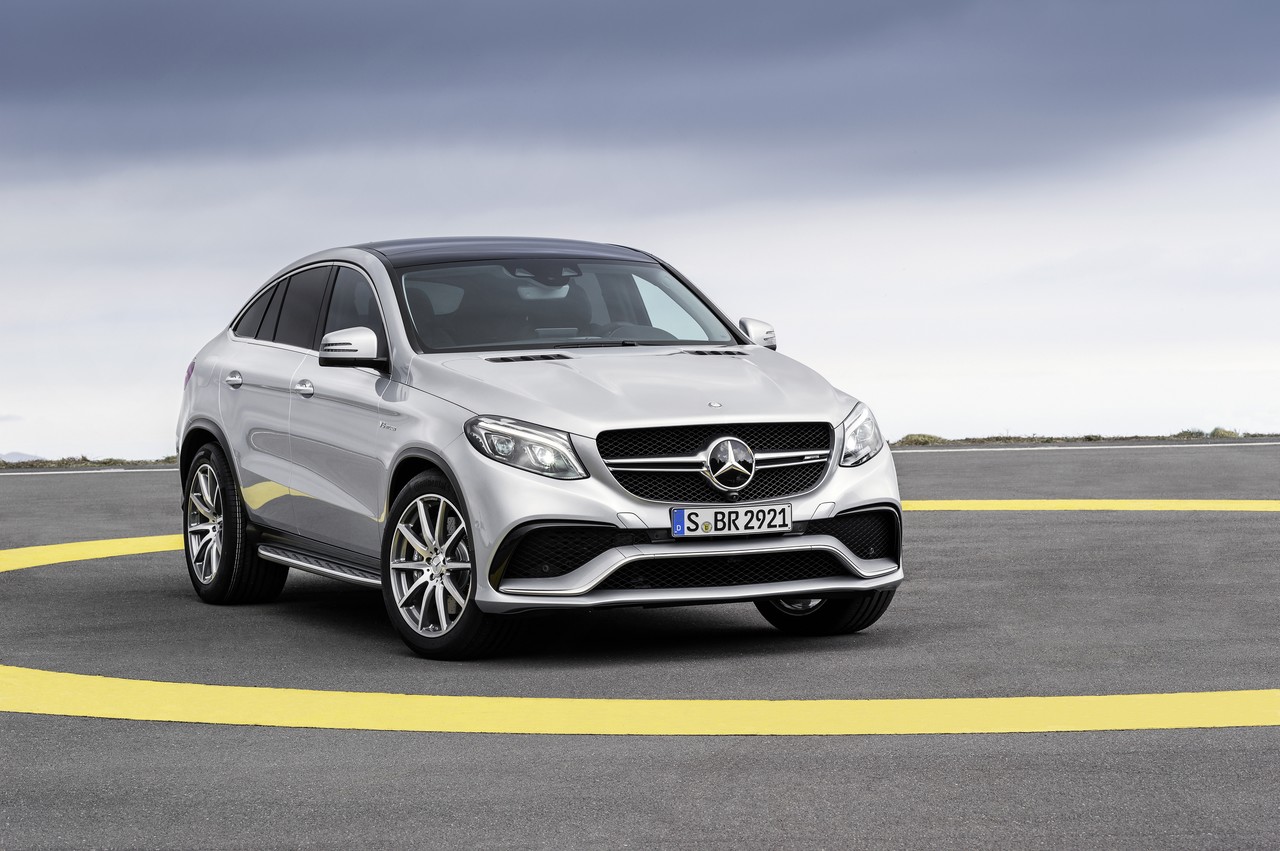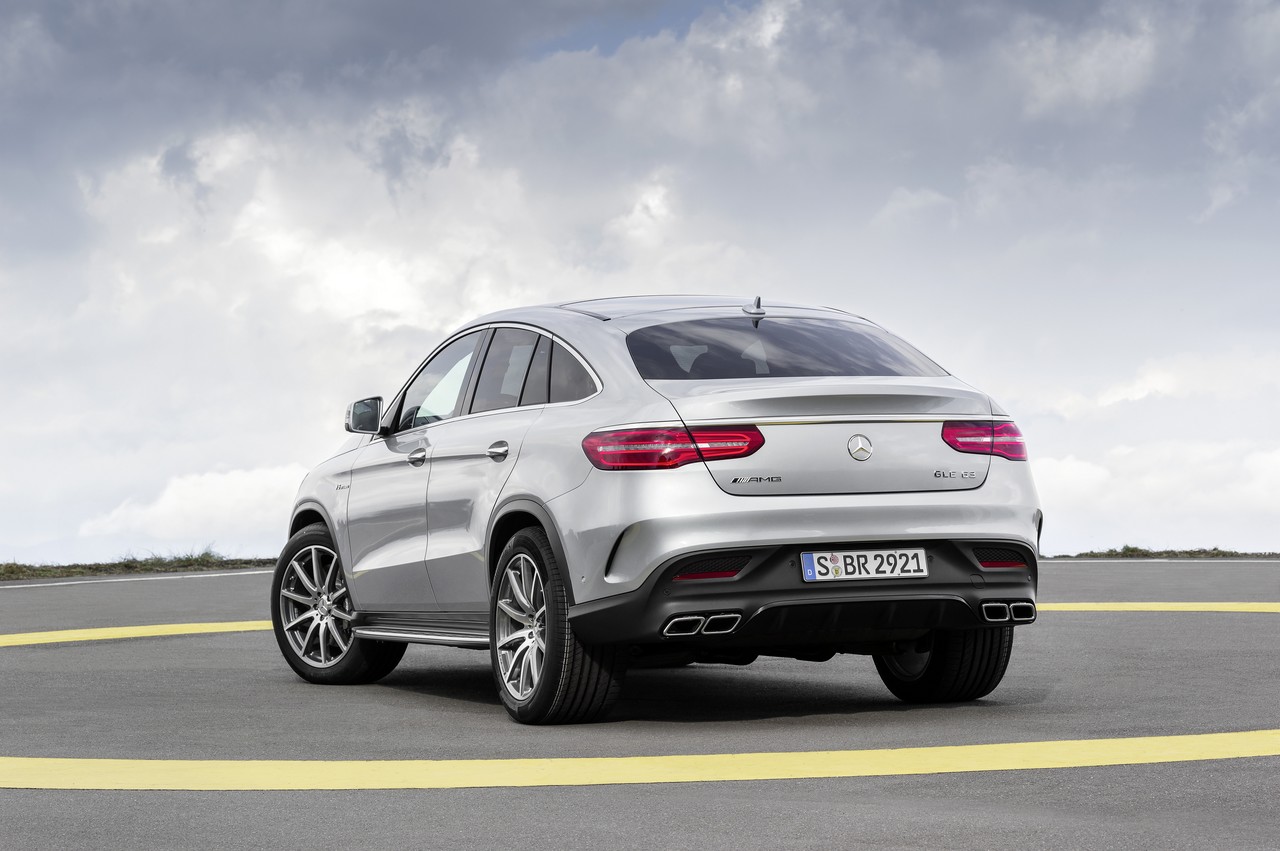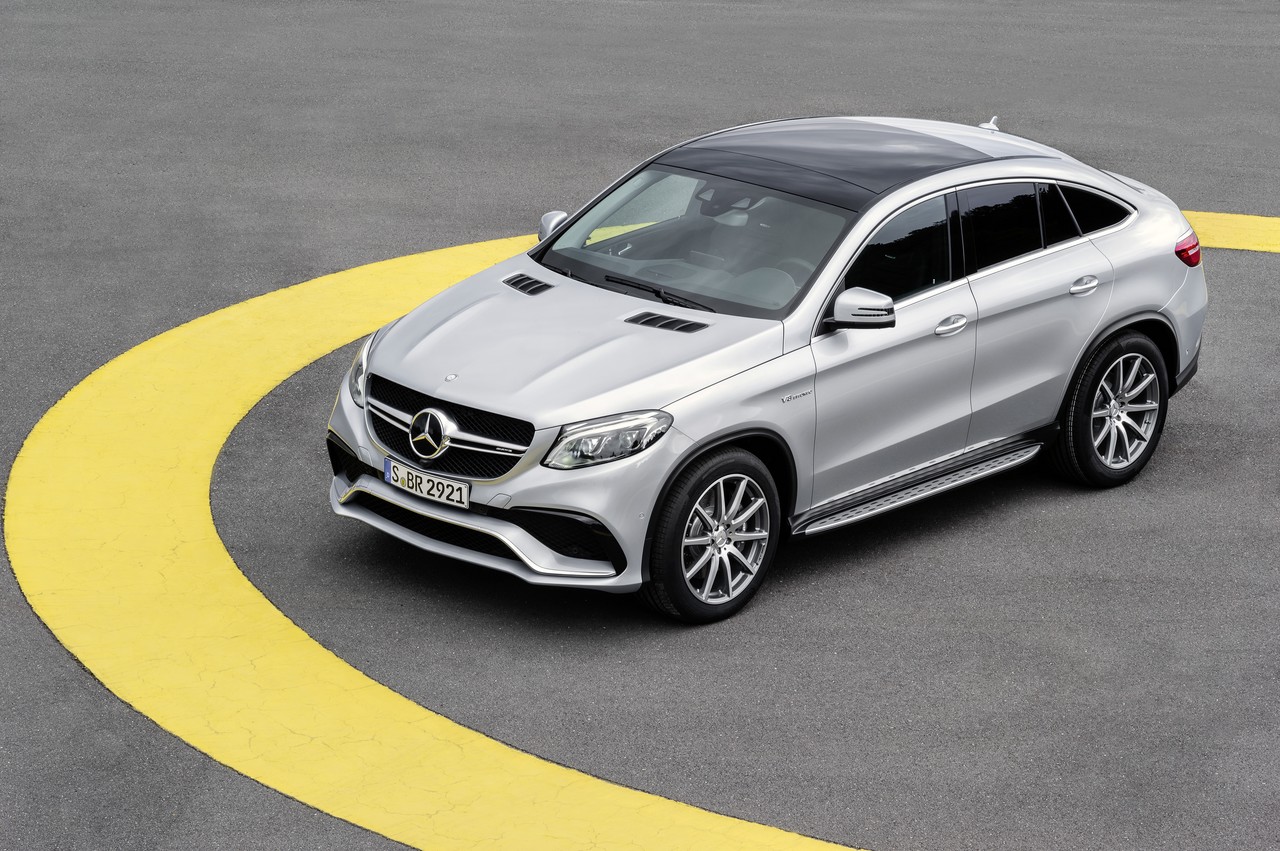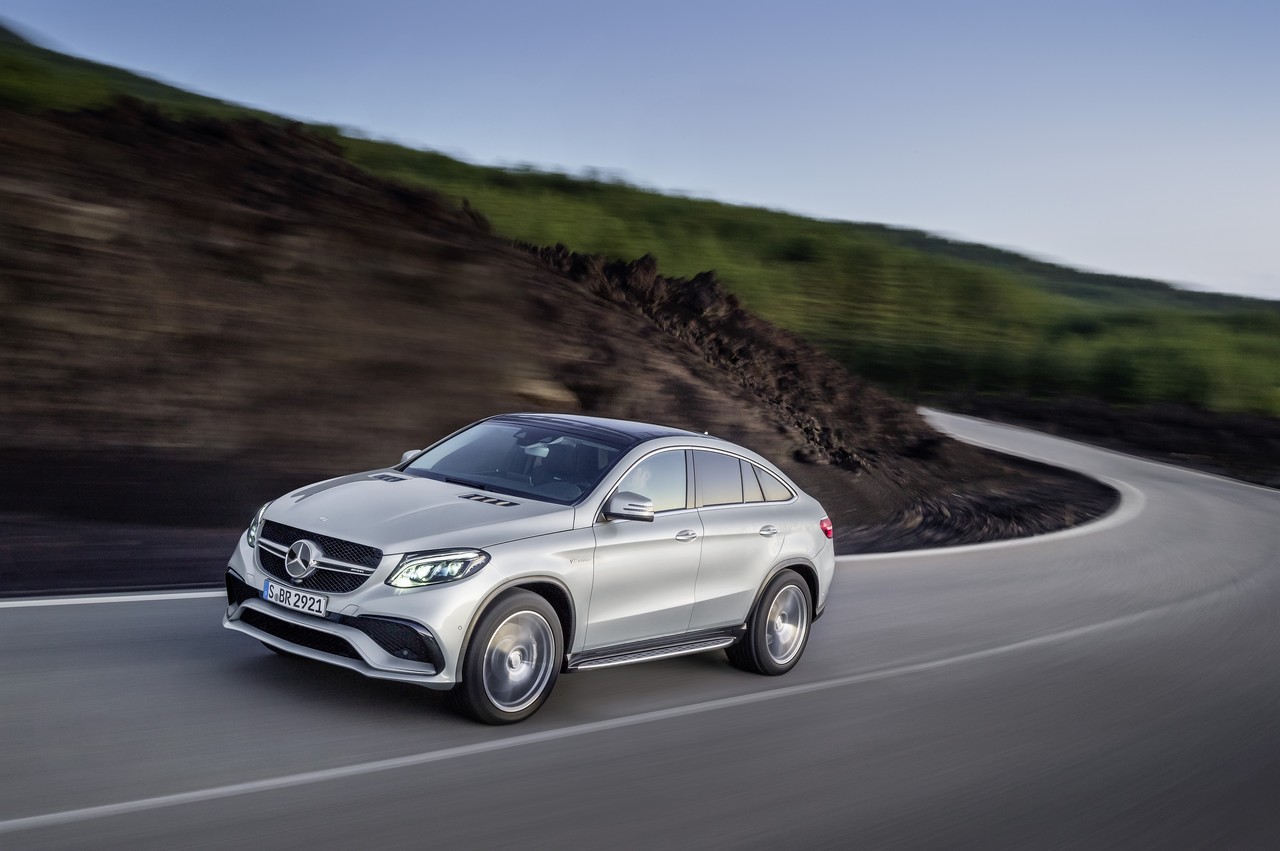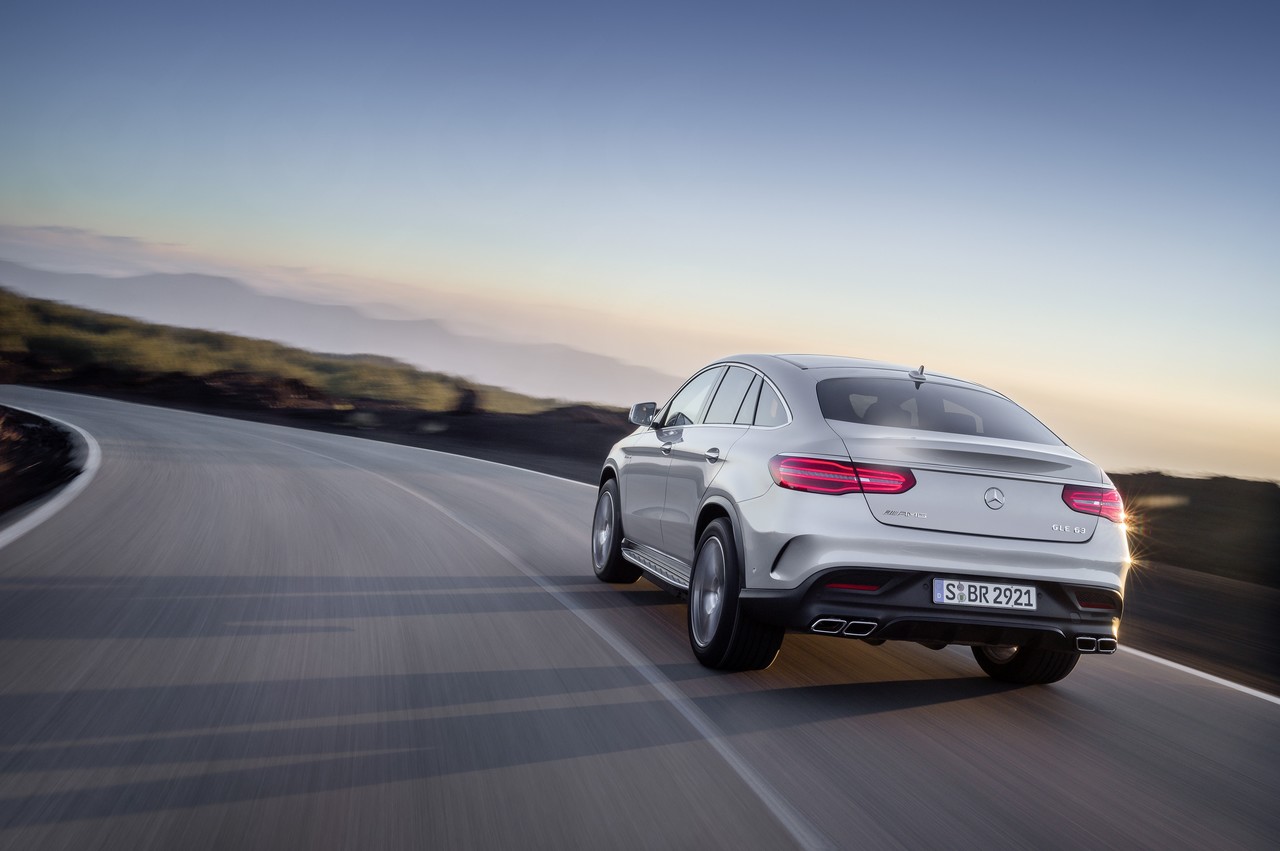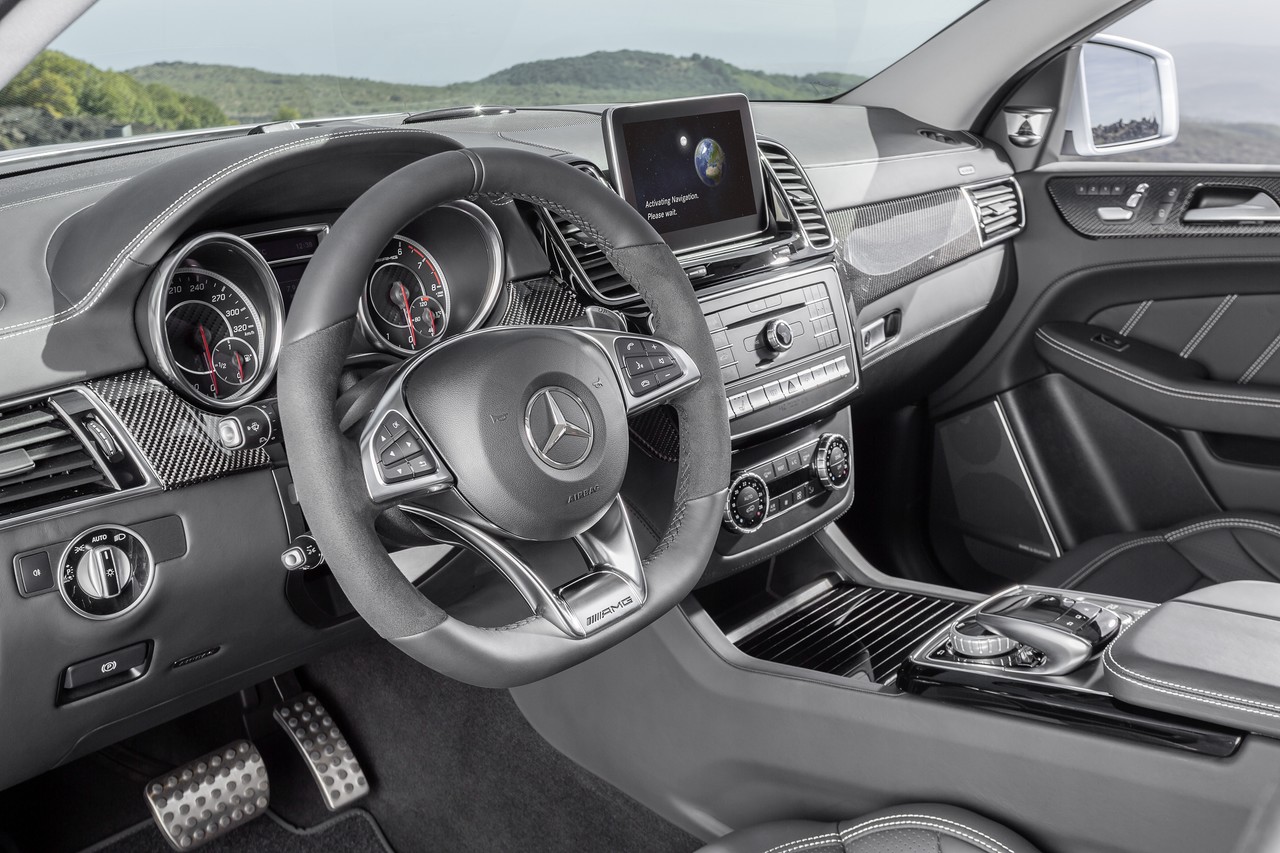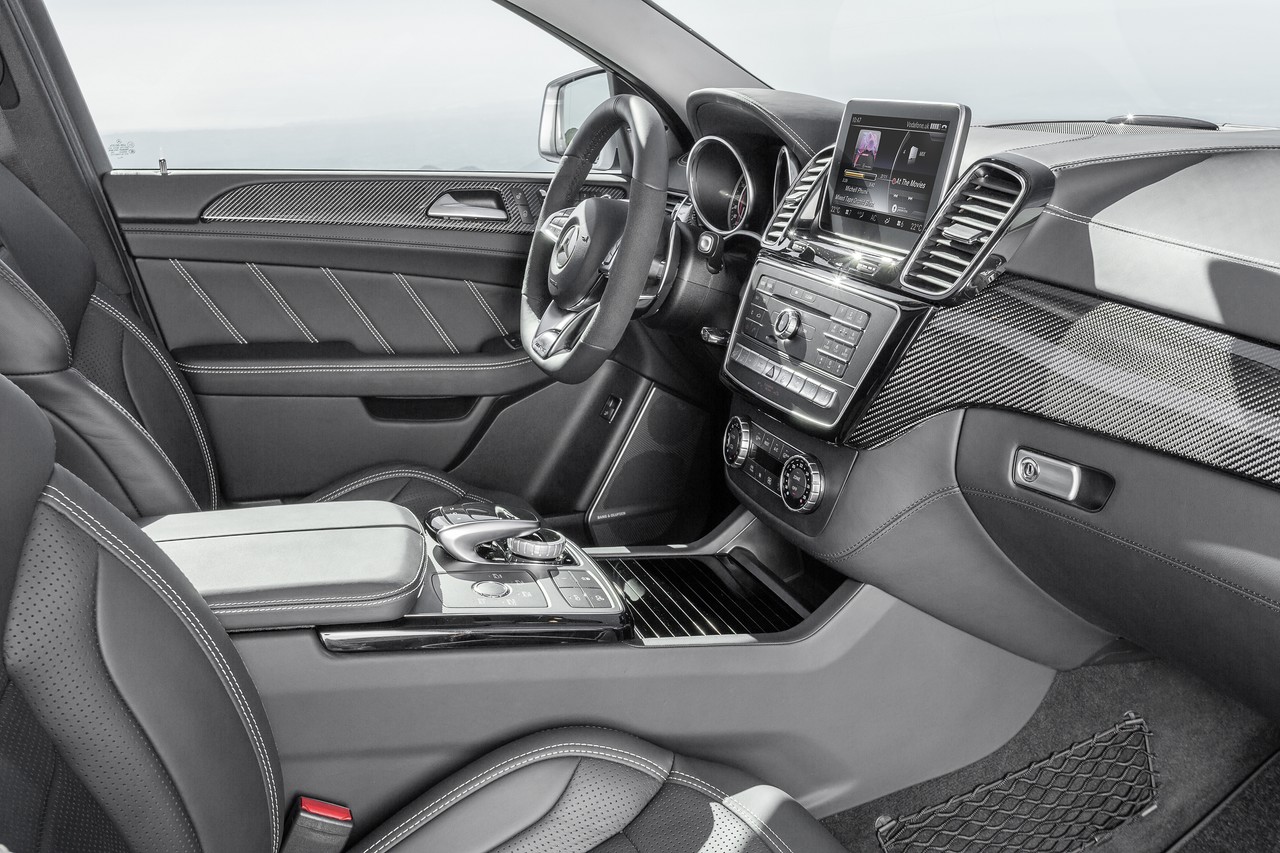
- For GLE 63, powerful 5.5-litre biturbo M157 V8 engine
- Impressive ride/handling balance
- Supportive front seats
- Suspension upset by mid-corner bumps and rougher surfaces
- Raked roofline limits practicality
- Poor rear visibility
- High running and maintenance costs
Overview
The Mercedes-AMG C292 GLE was a large, four-wheel drive SUV with a coupe-like profile. Released in Australia in June 2015, the C292 GLE range initially consisted of the GLE 63 S which was powered by a 5461 cc biturbo V8 petrol engine that was mated to a seven-speed automatic transmission. In July 2016, however, the range was expanded with the GLE 43 which was powered by a 2996 cc biturbo V6 petrol engine that was mated to a nine-speed automatic transmission.
C292 GLE 43: M276 biturbo V6 engine
The Mercedes-AMG GLE 43 was powered by the 2996 cc M276 V6 engine which had an aluminium alloy cylinder block with ‘Nanoslide’ coating for the cylinder liners, a forged steel crankshaft, an aluminium alloy cylinder head, chain-driven double overhead camshafts, independent intake and exhaust camshaft adjustment, four valves per cylinder, a variable-resonance intake manifold, direct injection via piezo injectors which provided injection pressure of up to 200 bar, and a compression ratio of 10.7:1.
To minimise fuel consumption, the M276 engine had:
- An ECO start/stop function that could shut down the engine when the E 43 was stationary in traffic; and,
- In ‘Eco’ mode, a coasting function that could disengage the clutch when driving at speeds between 60 km/h and 160 km/h to decouple the engine from the powertrain – this eliminated engine braking and electronics could reduce engine speed to idle level.
C292 GLE 63 S: M157 twin-turbo V8 engine
The 5461 cc M157 V8 engine had an aluminium block with Silitec cylinder liners, a forged steel crankshaft, fracture-split forged connecting rods, direct fuel injection via piezo injectors, an aluminium cylinder head, two Garrett MGT2260MSL turbochargers (one per cylinder bank) which provided peak boost pressure of 0.9 bar, an air/water intercooler, double overhead camshafts, four valves per cylinder and variable intake and exhaust valve timing.
| Engine | Trans. | Peak power | Peak torque | |
|---|---|---|---|---|
| GLE 43 Coupe | 2996 cc M276.821 biturbo petrol V6 | 9sp auto | 270 kW at 5500-6000 rpm | 520 Nm at 2000-4200 rpm |
| GLE 63 S Coupe | 5461 cc M157.982 biturbo petrol V8 | 7sp auto | 430 kW at 5500 rpm | 760 Nm at 1750-5250 rpm |
GLE 43: 4MATIC all-wheel drive system and 9G-Tronic transmission
For the Mercedes-AMG GLE 43, AustralianCar.Reviews understands that the ‘4MATIC’ all-wheel drive system utilised a centre planetary differential and multiple-disc clutch, with the single-stage transfer case flange-mounted on the nine-speed ‘9G Tronic’ automatic transmission. In normal conditions, the 4MATIC system provided a 31:69 front:rear torque split.
For the GLE 43, the driver could select from Eco, Comfort, Sport, Sport Plus and Manual modes for different transmission gearshift mapping and shift speeds. In ‘Eco’ mode, the clutch could disengage to decouple the engine from the powertrain when the driver released the accelerator and the GLE 43 was travelling between 60 km/h and 160 km/h; when this occurred, engine speed was reduced to idle and the driving resistance was reduced by the compression and frictional forces of the engine in over-run mode.
GLE 63 S: 4MATIC all-wheel drive and AMG Speedshift Plus 7G-Tronic
The Mercedes-AMG GLE 63 had a full-time four-wheel drive system (‘4MATIC’) with three open differentials. In normal conditions, the system provided a 40:60 front:rear torque split. Furthermore, the adaptable traction control system (‘4ETS’) could brake any wheel that was about to lose traction to transfer torque to the wheels with grip. Features of the 4MATIC system included:
- Downhill Speed Regulation (DSR): designed for steep downhill gradients and activated by pushing a button in the centre console. With DSR, vehicle speed would be kept constant by engine and transmission control, and automatic braking. While the system would initially set a speed of 6 km/h, the driver could use the cruise control stalk to set the desired downhill speed between 4 km/h (minimum) and 18 km/h (maximum); and,
- Start-Off Assist: helped the vehicle more safely accelerate from rest when on steep uphill gradients, by preventing the vehicle from rolling backwards as the driver moved their foot from the brake pedal to the accelerator. During this period, brake pressure would be provided by an ‘actively controllable’ brake servo unit. Start-Off Assist was automatically activated by an inclination sensor.
For the GLE 63 S, the seven-speed AMG Speedshift Plus 7G-Tronic transmission enabled the driver to select from three modes:
- ‘Controlled Efficiency’, ‘C’, for softer throttle response, smooth gearshifts, acceleration from rest in second gear (generally), early upshifts and activation of the ECO start/stop to reduce fuel consumption;
- ‘Sport’, ‘S’, for greater throttle response, gear changes at higher engine speeds, faster gearshifts, disabled the ECO start/stop function, activated a double declutching function when downshifting and, for faster gearshifts under full loads, enabled the engine to partially suppress ignition and injection in individual cylinders; and,
- ‘Manual’, ‘M’, for gear shifting solely via the steering wheel gearshift paddles.
Gear ratios for the AMG Speedshift Plus 7G-Tronic were 4.38 (1st), 2.86 (2nd), 1.92 (3rd), 1.37 (4th), 1.00 (5th), 0.82 (6th) and 0.73 (7th); the final drive ratio was 3.47.
Body and dimensions
The C292 GLE Coupe shared its platform with the W166 M-Class ; relative to the W166 M-Class, however, the GLE Coupe was 97 mm longer (at 4900 mm), 128 mm narrower (2003 mm), 65 mm lower (1731 mm) and had a 1 mm shorter wheelbase (2915 mm).
Suspension: Airmatic, Adaptive Damping System and Active Curve System
The Mercedes-AMG C292 GLE Coupe had double wishbone front suspension and independent, multi-link rear suspension. Beyond this, the GLE 43 and GLE 63 S were fitted with Mercedes-Benz’s ‘Airmatic’ air suspension with Adaptive Damping System (ADS) which consisted of:
- Air-filled spring struts on the front axle with integral ADS dampers;
- Air springs with separate ADS dampers on the rear axle;
- Electric compressor with central pressure reservoir and pressure sensor;
- Air spring valves;
- Sensors for level control and damping control; and,
- An electronic control unit.
Airmatic air suspension could compensate for variations in vehicle load and driving state, while also acting as a level control system. For speeds above 70 km/h or when the ‘Sport plus’ mode was engaged, the air suspension would lower the body by 10 mm to reduce drag and increase stability. For off-road use, the air springs could increase ground clearance by up to 60 mm.
ADS was a fully automatic, electronically-controlled system which adapted the damping force at each wheel according to the road and driver behavior to reduce the forces exerted on the body by the movement of the wheels; the driver could also select from ‘Comfort’, ‘Sport’ and ‘Sport plus’ modes. ADS had four maps which it could use based on steering angle, turning angle sensors, vehicle speed and braking application:
- Level 1: soft rebound and soft compression for comfortable ride characteristics, suitable for little longitudinal and lateral acceleration;
- Level 2: soft rebound and firm compression (skyhook mode);
- Level 3: firm rebound and soft compression (skyhook mode);
- Level 4: firm rebound and firm compression, for minimising wheel load fluctuations when cornering and braking for more secure handling.
While Level 1 would be used for low levels of body movement, greater movement would result in the skyhook algorithm alternating between Levels 2 and 3 – by activating the fast-acting solenoid valves – to counter body roll and pitch. In more ‘dynamic’ handling conditions or when the ‘Sport’ or ‘Sport plus’ suspension modes were engaged, Level 4 would be used.
Also fitted as standard, the Active Curve System used active anti-roll bars on the front and rear axles to control body roll according to lateral acceleration, road speed and the suspension mode selected. When driving straight ahead, rotary actuators would decouple the two halves of the front and rear anti-roll bars so that they were not active. When the active anti-roll bars were operating,
- A hydraulic pump would feed oil to the anti-roll bar circuits;
- The active anti-roll bars had internal hydraulic rotary actuators with six-oil filled chambers, three of which were pressured for each direction of travel (i.e. cornering left or right). Furthermore, the front valve block had the task of distributing the oil flow between the front and rear axles, regardless of load; and,
- Pressure control valves and directional control valves that were integrated into the valve blocks at the front and rear axles would set the desired pressure and twist the active anti-roll bars in the appropriate direction.
Steering
The Mercedes-AMG C292 GLE 43 and GLE 63 S had electromechanical, rack-and-pinion steering. The level of power assistance varied with vehicle speed and the suspension mode selected.
Safety equipment
Standard safety equipment for the Mercedes-AMG GLE 43 and GLE 63 S included dual front airbags, a driver’s knee airbag, front and rear seat-mounted side airbags, full-length curtain airbags, ABS, electronic brake force distribution, brake assist, electronic stability control, traction control, active front seat head restraints, and front seatbelts with pre-tensioners and load limiters.
Standard active safety technologies for the Mercedes-AMG GLE 43 and GLE 63 S included:
- Mercedes-Benz’s ‘Pre-Safe’: if a collision was anticipated, Pre-Safe initiated automatic tensioning of the front occupants’ seatbelts, closure of the windows and sunroof and adjusted the position of the front passenger seat (if the memory package was fitted) to enhance occupant protection;
Pre-Safe Brake with pedestrian recognition: used a stereo camera and radars to detect vehicles and pedestrians in the vehicle’s path. In the event of an imminent collision, Pre-Safe Brake provided visual and acoustic warnings. If the driver failed to react, however, the brakes be applied automatically (i.e. autonomous emergency braking or AEB); - Pre-Safe Plus: could anticipate rear-end collisions and warn following traffic by activating the rear hazard lights at high frequency. The Pre-Safe system would then deploy occupant protection measures and, post-collision, apply the vehicle’s brakes to prevent secondary accidents;
- Active Brake Assist with cross-traffic function: extended speed thresholds for autonomous braking (‘Active Brake Assist’) for vehicles and pedestrians. The cross-traffic function could detect crossing traffic at junctions and, in hazardous situations, could apply the brakes autonomously. Furthermore, it could detect hazardous situations at the tail-end of traffic jams (where there was no room to manoeuvre) and initiate autonomous braking far sooner. Consequently, it was possible to avoid accidents at speeds up to 100 km/h or substantially reduce the severity of accidents at speeds above this level;
- Distronic Plus with Steering Assist and Stop&Go Pilot: while adaptive cruise control (‘Distronic Plus’) could maintain a safe distance from a vehicle ahead – even in stop/start traffic – the Stop&Go Pilot used a stereo camera to recognise lane markings and would apply steering torque to help the driver to stay in the centre of their lane;
- Active Blind Spot Assist: active at speeds above 60 km/h, a corrective braking force would be applied to the wheels on one side of the vehicle if the driver attempted to change lanes when a vehicle was detected in the driver’s blind spot;
- Active Lane Keeping Assist: would vibrate the steering wheel as the vehicle approached a continuous lane marking line and, if crossed, automatically brake wheels on one side of the vehicle to return the vehicle within the lane;
- Crosswind Assist: could detect sudden, strong gusts of wind and prevent the vehicle from drifting out of its lane via corrective braking forces on one side of the vehicle; and,
- Attention Assist with drowsiness detection: operated at speeds in excess of 80 km/h and assessed driver behaviour (including steering movements) for signs of drowsiness; if detected, the driver would be provided with visual and audible warnings.
Wheels and tyres
The Mercedes-AMG had 10.0J x 22-inch front AMG five-twin spoke alloy wheels with 285/40 R22 tyres and 11.0J x 22-inch rear wheels with 325/35 R22 tyres. The GLE 63 S, however, had 10.0J x 22-inch AMG cross-spoke alloy wheels with titanium grey finish and 285/40 R22 tyres, and 11.5J x 22-inch rear wheels with 325/35 R22 tyres.
Features: Mercedes-AMG C292 GLE 43
As standard, the Mercedes-AMG was equipped with Mercedes-Benz’s COMAND Online system which included a 20.3 cm TFT colour display, HDD navigation with live traffic updates, a CD/DVD player, MP3/WMA/AAC compatibility, a digital radio tuner (DAB+), ‘Linguatronic’ voice control, Internet connectivity, Bluetooth mobile phone connectivity and audio streaming, two USB ports, an SD card slot, telephone keypad, Wi-Fi and internet connectivity, and Apple CarPlay smartphone integration. From 21 July production, the COMAND Online system also provided Android Auto smartphone integration.
Beyond this, standard features for the Mercedes-AMG C292 GLE 43 included an 830 watt Harman Kardon Logic 7 surround sound system with fourteen speakers, power adjustable front sports seats with enhanced bolstering and heating, AMG Line Nappa leather upholstery, dual-zone climate control air conditioning (‘Thermatic’), cruise control, LED daytime running lights, front and rear parking sensors, a rear view camera and 360 degree surround camera system, a flat-bottom steering wheel with Nappa leather trim and gearshift paddles, 1/3 to 2/3 split and folding rear seats with through-loading facility, remote central locking with proximity key, power adjustable and heated door mirrors with folding function, power mirrors, a power adjustable steering column for height and reach, an electric parking brake, auto-dimming functions for the door and interior mirrors, three 12 volt power sockets, memory settings (for the fronts seats, steering column and door mirrors), ambient lighting, velour floor mats, rear privacy glass, a panoramic sliding sunroof, instrument cluster with an 11.4 cm multifunction colour TFT display, tyre pressure monitoring, a trip computer, an immobiliser and alarm system.
As standard, the Mercedes-AMG GLE 43 also featured:
- Parking Pilot with Parking Assist: automatically engaged when driving at speeds up to 30 km/h, Parking Pilot could identify parallel and right angle parking spaces. Furthermore, the Parking Assist function could provide automated steering to manoeuvre the vehicle into the space while the driver controlled vehicle speed;
- LED Intelligent Light System: enabled the main LED beam to remain on since an area of that beam could be masked out to avoid dazzling traffic;
- Adaptive Highbeam Assist Plus: automatically dipped the high beam headlights to avoid dazzling other drivers; and,
- An ‘Easy-Pack Tailgate’: provided power-operated opening and closing of the tailgate.
Features: Mercedes-AMG GLE 63 S Coupe
Compared to the Mercedes-AMG GLE 43, the Mercedes-AMG GLE 63 S was differentiated by its multi-contour front seats with heating and ventilation functions, AMG Exclusive S Nappa leather upholstery, three-zone climate control air conditioning (‘Thermotronic’), AMG Performance steering wheel, ‘Dinamica’ black headlining, digital TV tuner, air ionisation and air filter (‘Air-Balance’), and AMG Performance exhaust system.
Specifications
Related links
